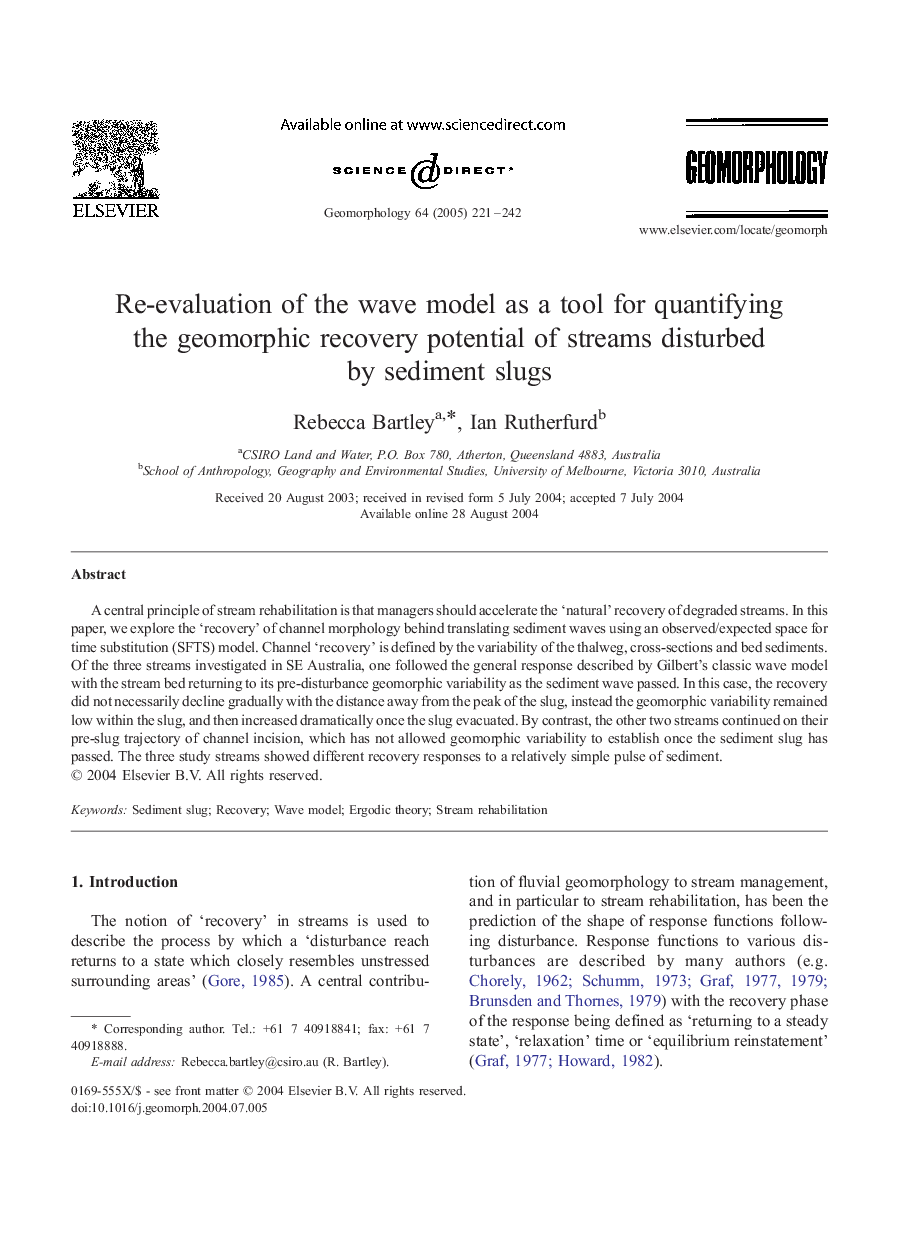| Article ID | Journal | Published Year | Pages | File Type |
|---|---|---|---|---|
| 9525001 | Geomorphology | 2005 | 22 Pages |
Abstract
A central principle of stream rehabilitation is that managers should accelerate the 'natural' recovery of degraded streams. In this paper, we explore the 'recovery' of channel morphology behind translating sediment waves using an observed/expected space for time substitution (SFTS) model. Channel 'recovery' is defined by the variability of the thalweg, cross-sections and bed sediments. Of the three streams investigated in SE Australia, one followed the general response described by Gilbert's classic wave model with the stream bed returning to its pre-disturbance geomorphic variability as the sediment wave passed. In this case, the recovery did not necessarily decline gradually with the distance away from the peak of the slug, instead the geomorphic variability remained low within the slug, and then increased dramatically once the slug evacuated. By contrast, the other two streams continued on their pre-slug trajectory of channel incision, which has not allowed geomorphic variability to establish once the sediment slug has passed. The three study streams showed different recovery responses to a relatively simple pulse of sediment.
Keywords
Related Topics
Physical Sciences and Engineering
Earth and Planetary Sciences
Earth-Surface Processes
Authors
Rebecca Bartley, Ian Rutherfurd,
